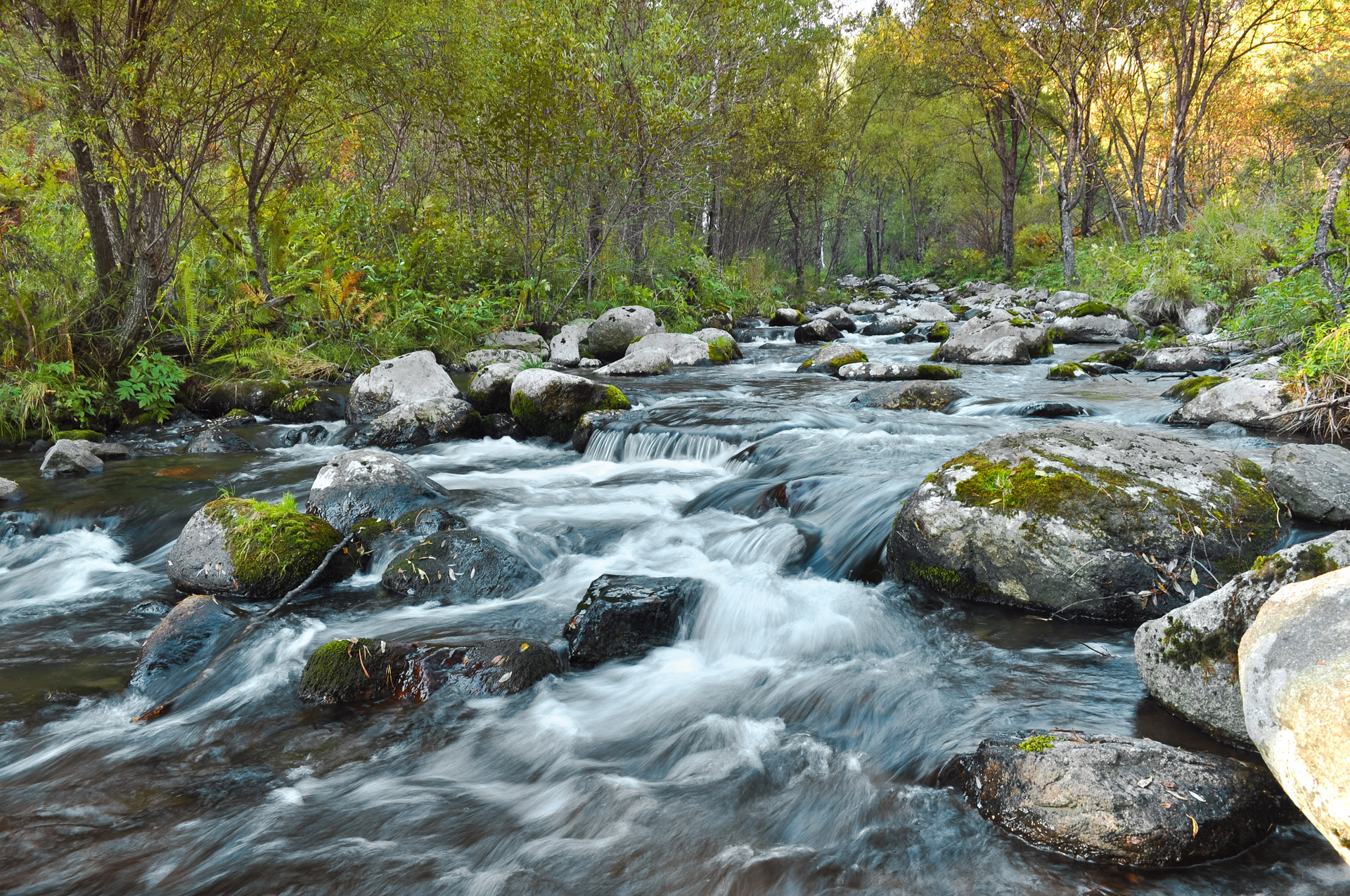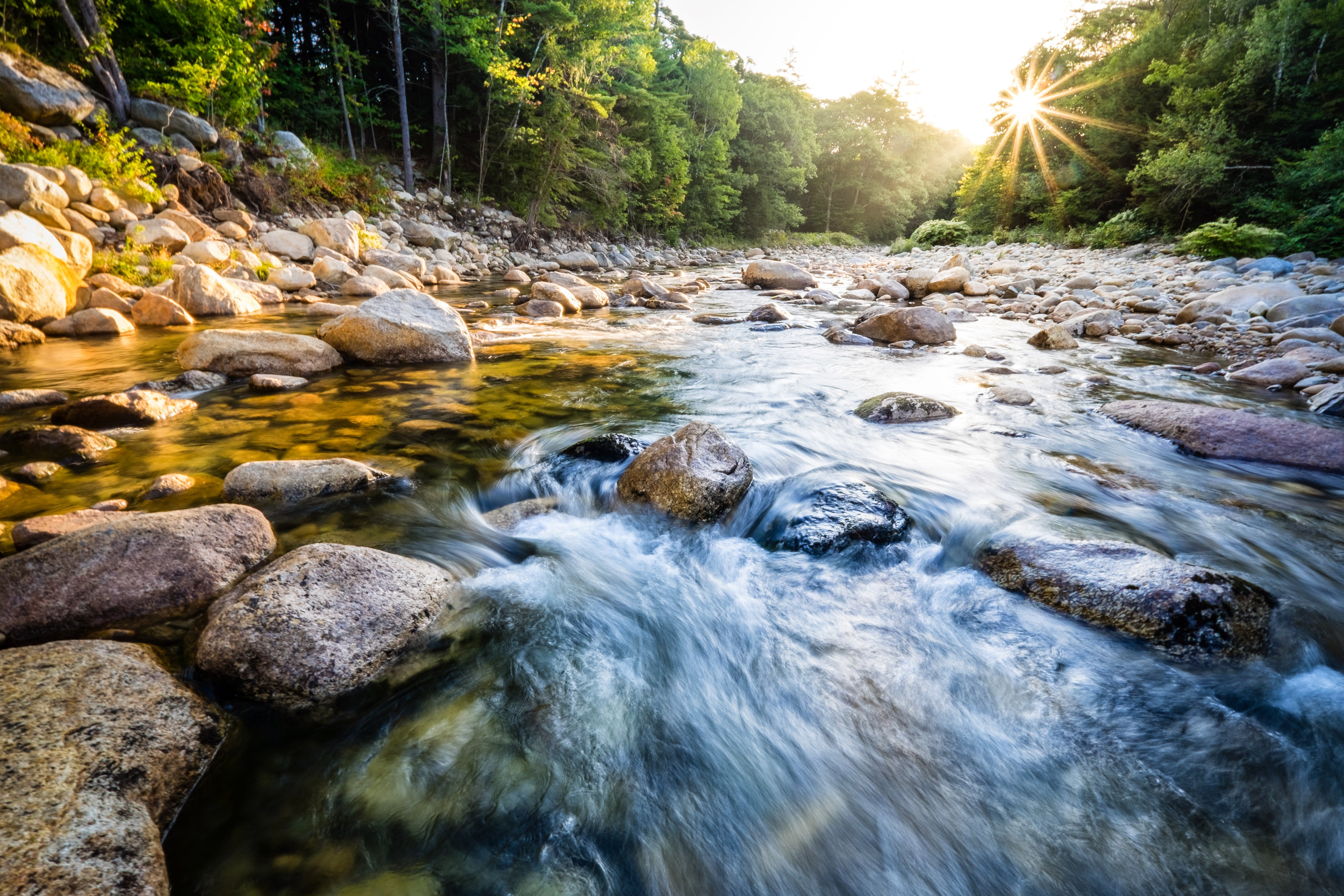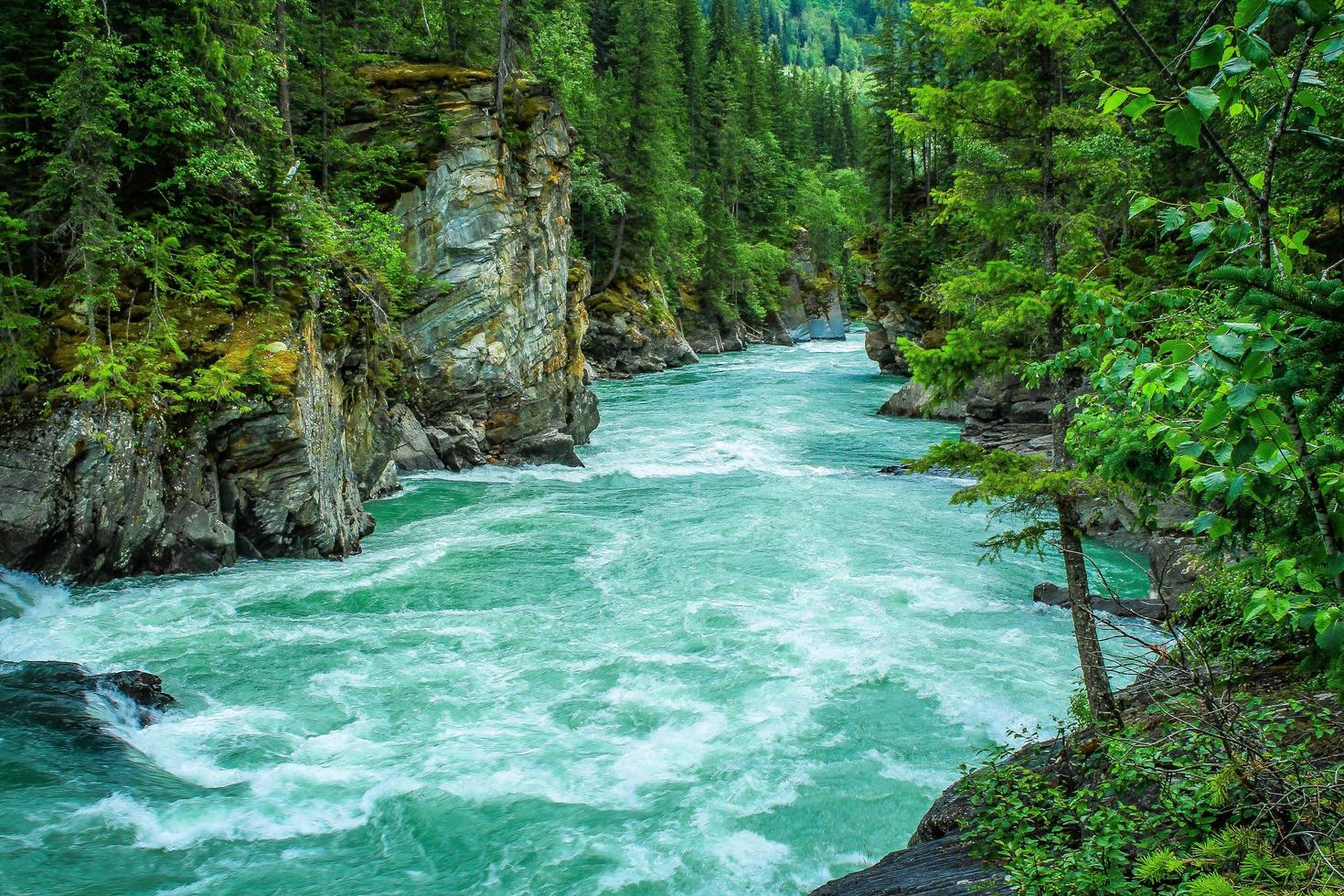There's something truly captivating about a flowing river, isn't there? It's almost like a living ribbon, winding its way across the land, shaping the very ground beneath our feet. For generations, people have found themselves drawn to these natural streams, whether for comfort, for sustenance, or just for the sheer beauty of their constant, quiet movement. We, you know, often forget how much these waterways do for us, how they connect places and sustain life in countless forms.
Consider, for instance, the many ways a river interacts with its surroundings. It's not just a body of water; it's a dynamic system, constantly at work. From the moment precipitation falls and begins its journey downhill, finding its way into tiny rivulets that eventually join to form a larger stream, a river is shaping the world. This natural process, which, you know, seems so simple, actually plays a huge part in how our planet functions, influencing everything from the soil to the very air we breathe.
When we think about something like "river russell deary," it encourages us to really consider the intricate dance between water and land. It brings to mind how these channels move water, how they can carry things, and how they sometimes even hold secrets in their depths. Whether it's the speed of the current, the makeup of the riverbed, or the delicate balance of life within, there's a whole lot to explore and appreciate. So, let's take a closer look at what makes these natural wonders so important, and how we interact with them every single day.
Table of Contents
- The River's Pulse and Flow - Understanding River Russell Deary's Current
- What Makes a River Bed Unique - The Foundation of River Russell Deary
- How Do Floodplains Work - River Russell Deary's Wider Reach
- The Impact of Human Activity on Rivers - Protecting River Russell Deary
- Water Quality and River Health - Keeping River Russell Deary Clean
- Rivers as Life Lines - The Vital Role of River Russell Deary
- Where Do Rivers Exist - The Global Presence of River Russell Deary
- The Many Faces of a River - Exploring River Russell Deary's Forms
The River's Pulse and Flow - Understanding River Russell Deary's Current
Rivers are, in essence, moving bodies of water, and their movement, their flow, is a fundamental characteristic. We often talk about the "speed of the river current," and figuring this out can be quite a task. For example, if you're trying to figure out how fast a river is moving, you might need to consider various factors, like the shape of the channel or the amount of water present. In some situations, you might even have to neglect the weight of certain items, like a cable, when making these kinds of estimates. It's a bit like trying to guess how fast a car is going just by looking at it; there are many things that influence the actual speed. So, when we consider the flow of a river, we're really looking at a complex system where many elements play a part in its overall movement.
Think about a river that flows in a certain direction, say, eastwards, staying generally parallel to its banks. The quickness of this flow, that is, its speed, can actually change depending on how far you are from one of the banks. For instance, the water might move differently near the southern bank compared to the middle of the river. This variation is often described using terms like 'vo' as a positive constant and 'l' as a specific measurement, which helps scientists and people who study rivers understand and predict how the water will behave. It's really quite interesting how a river's speed isn't just one fixed number but, in fact, changes across its width, making each part of the river a little bit different.
What Makes a River Bed Unique - The Foundation of River Russell Deary
The ground beneath a river, known as its bed, is a very important part of its identity, too. Sometimes, this riverbed is made up of a layer of sand, perhaps eight and a quarter meters thick, sitting on top of rock that water can't pass through. Above this, you might find about two and a half meters of water. This setup, with its layers of sand and rock, helps to shape how the river flows and what kinds of things it carries along. It's a bit like the foundation of a building; what's underneath really matters for what's on top. So, when we think about a river, it's good to remember that its character isn't just about the water, but also about the ground it moves over, which, you know, can be quite varied.
- Olivia Newton John Movies And Tv Shows
- Oliver Hudson Movies And Tv Shows
- Elon Musk New Child
- Watch The Notebook
- Lyrics To September By Earth Wind And Fire
In some situations, people might build a structure called a long cofferdam, which could be around five and a half meters wide. This is done by pushing two lines of sheet piling deep into the ground. These structures are often put in place to manage the water, perhaps to allow work to be done in a dry area that would normally be under the river. This shows how people can change the riverbed, even if just for a short time, to serve various purposes. It's a way of interacting with the river's physical makeup, temporarily altering its natural state to achieve a specific goal. This kind of activity, honestly, shows how much we rely on rivers and how we try to shape them for our needs.
How Do Floodplains Work - River Russell Deary's Wider Reach
When we talk about rivers, we often hear about floodplains, and it's good to know what they truly are. To get the right idea of what a floodplain is, you need to think about how it relates to the river channel itself. You also need to consider if the ground surface in that area is flat or if it has some gentle waves. Basically, a floodplain is the flat or nearly flat land area adjacent to a river that is subject to flooding. It's the space where the river spreads out when its water levels get too high. This area is a natural part of the river system, and its characteristics, like its flatness, make it more likely to be covered by water during periods of heavy flow. So, it's a bit like the river's overflow zone, where it expands its presence during certain times of the year.
Understanding these areas is, you know, really important, especially for communities living near rivers. If the ground is very flat, the water can spread out over a much larger area, affecting more properties and roads. This natural process, while sometimes causing problems for people, is also a vital part of the river's overall health and its surrounding ecosystem. It helps to deposit rich soil and supports specific types of plant and animal life that depend on these periodic water coverings. So, floodplains are not just areas to avoid; they are actually a very important part of the river's natural way of working, showing how the "river russell deary" concept extends beyond the immediate banks.
The Impact of Human Activity on Rivers - Protecting River Russell Deary
Human activities have a very real impact on rivers, and we can see this in many places. For instance, think about factories situated along a river, like those on the Momiss River. Each of these places might put two kinds of unwanted substances into the water, perhaps labeled as 'p1' and 'py'. If the waste from each factory is treated, the amount of unwanted material in the river goes down. This shows that how we manage our waste has a direct effect on the cleanliness of the water. It's a clear example of how our actions, good or bad, directly influence the state of these natural waterways. So, it's not just about the river itself, but also about what we, as people, choose to do around it.
Consider the Cooper River Glass Works, for example, which makes different models of desk lamps. Their operations manager knows that the total monthly demand for these lamps is more than they can produce. While this isn't directly about river pollution, it highlights how industrial activities are located near rivers, often for historical reasons like transport or water supply. The existence of such operations near a river means there's always a potential for interaction, whether it's through water usage or waste discharge. It's a constant reminder that our industrial footprint is often very close to these natural resources, and managing that relationship is, in fact, a continuous effort.
Even recreational activities can have an effect. Rocky Mountain National Park, a popular spot for outdoor fun in Colorado, sees many visitors. National Park Service figures show that a large percentage of visitors come to this park. While parks work hard to protect their natural features, the sheer number of people can put a strain on the environment, including the rivers that flow through them. This suggests that even seemingly harmless activities, when done by many people, can add up to a noticeable impact on a river's health and its natural state. So, it's not just big factories; even our leisure activities, in a way, play a part in the story of a river.
Water Quality and River Health - Keeping River Russell Deary Clean
Keeping rivers healthy means paying close attention to the quality of their water. Reports known as TMDL reports are really important because they help us identify and look at problems with water quality in waterways that aren't doing so well. They also suggest ways to fix these problems so that the water meets certain quality standards. This process is about understanding what's wrong and then figuring out how to make it right, ensuring that the river can support life and be safe for use. It's a bit like a health check-up for a river, where you find out what's ailing it and then prescribe a way to get it back to good health. So, these reports are, in fact, a key tool in protecting our water resources.
We also have places that are set up to help people enjoy rivers responsibly. For example, there are sites on a beautiful fifty-six acres with a nature trail that stretches for a mile and a half, nestled among thirty acres of woods along a river. These places often provide family-friendly campsites with full hookups. This kind of setup allows people to experience the river up close while, hopefully, encouraging them to be good stewards of the environment. It's a way of balancing human enjoyment with the need to protect the river's natural beauty and its delicate systems. This interaction, you know, is vital for the future of our waterways, helping us appreciate "river russell deary" in a sustainable way.
Knowing the conditions of rivers is also very helpful. You can, for instance, get river conditions in Ohio, or check on places like Abram Creek at Brook Park. This kind of information helps people understand what's happening with the water, whether it's safe for certain activities or if there are any issues. It's about being informed and being able to make good choices when interacting with rivers. Having access to this kind of real-time data, basically, empowers communities and individuals to play a more active role in caring for their local waterways. It's a practical step towards ensuring river health for everyone.
Rivers as Life Lines - The Vital Role of River Russell Deary
Rivers and their smaller branches, called tributaries, are often described as the veins of the planet. They do a very important job, pumping fresh water to wetlands and lakes, and then out to the sea. They also move important nutrients through water-based environments, helping thousands of different types of living things to thrive. Without rivers, these ecosystems would struggle to survive, as they rely on the constant flow of water and the substances it carries. It's a bit like our own circulatory system; if the veins aren't working, the whole body suffers. So, rivers are, in fact, absolutely central to the health of our natural world, supporting an incredible variety of life.
A river is, by its very definition, a natural stream of fresh water that moves across the land or even inside caves, heading towards another body of water that's at a lower level, like an ocean, a lake, or even another river. This movement from higher ground to lower ground is what drives the entire system. Sometimes, a river might even go completely dry, depending on the weather and the time of year. This natural process of water moving downhill, which, you know, seems so simple, is a fundamental force shaping our landscapes and providing water where it's needed. It's a constant, natural journey that defines what a river is.
Where Do Rivers Exist - The Global Presence of River Russell Deary
Rivers are found on every single continent and on nearly every kind of land surface imaginable. Some rivers flow all year round, keeping a steady stream of water moving no matter the season. Others flow only at certain times of the year, perhaps during wet periods or after heavy rains. A river might be quite short, just a few kilometers long, or it could stretch for many, many miles, crossing entire countries. This wide range in size and behavior shows just how adaptable and widespread these natural features are. So, you can find a river almost anywhere you look, each one with its own unique characteristics, illustrating the broad presence of what we might call the "river russell deary" phenomenon across the globe.
The sheer variety of rivers, from tiny trickles to massive waterways, is pretty amazing. They can carve out deep valleys, create vast deltas, and even shape the very climate of the areas they pass through. This global distribution means that rivers play a part in almost every ecosystem on Earth, from the coldest polar regions to the hottest deserts. They are a constant, natural presence, constantly shaping and being shaped by the land around them. This universal existence, basically, underscores their fundamental importance to our planet's geography and its living systems. It's a testament to the enduring power of flowing water.
The Many Faces of a River - Exploring River Russell Deary's Forms
Rivers come in many forms and have many roles. They are geographical features where fresh water moves through dry land from one place to another. They also act as natural drainage systems, carrying away excess water from the land. This dual role, as both a pathway for water and a natural drain, makes them incredibly important for managing water levels and preventing waterlogging in many areas. It's like they're the planet's plumbing system, managing the flow of water and keeping things in balance. So, when you see a river, you're looking at a system that performs a very vital function for the land around it.
Sometimes, the effects of rivers are seen in very practical ways, like when numerous homes, businesses, and public buildings are affected in and around a place like Celina, and many main roads are covered by floodwaters. This shows the raw power of a river when it's at its fullest. It's a reminder that while rivers provide many benefits, they also have the potential to cause significant changes to our built environments. This interaction between human settlements and natural river processes is a constant challenge, requiring careful planning and management. It's a clear example of how the "river russell deary" concept involves both the beauty and the sometimes challenging aspects of natural waterways.


